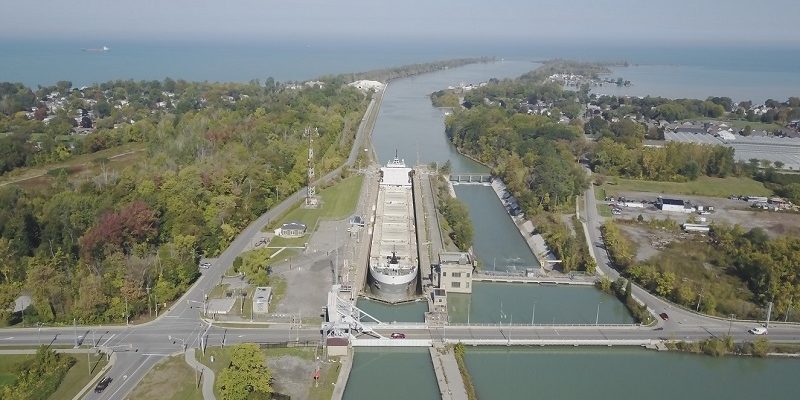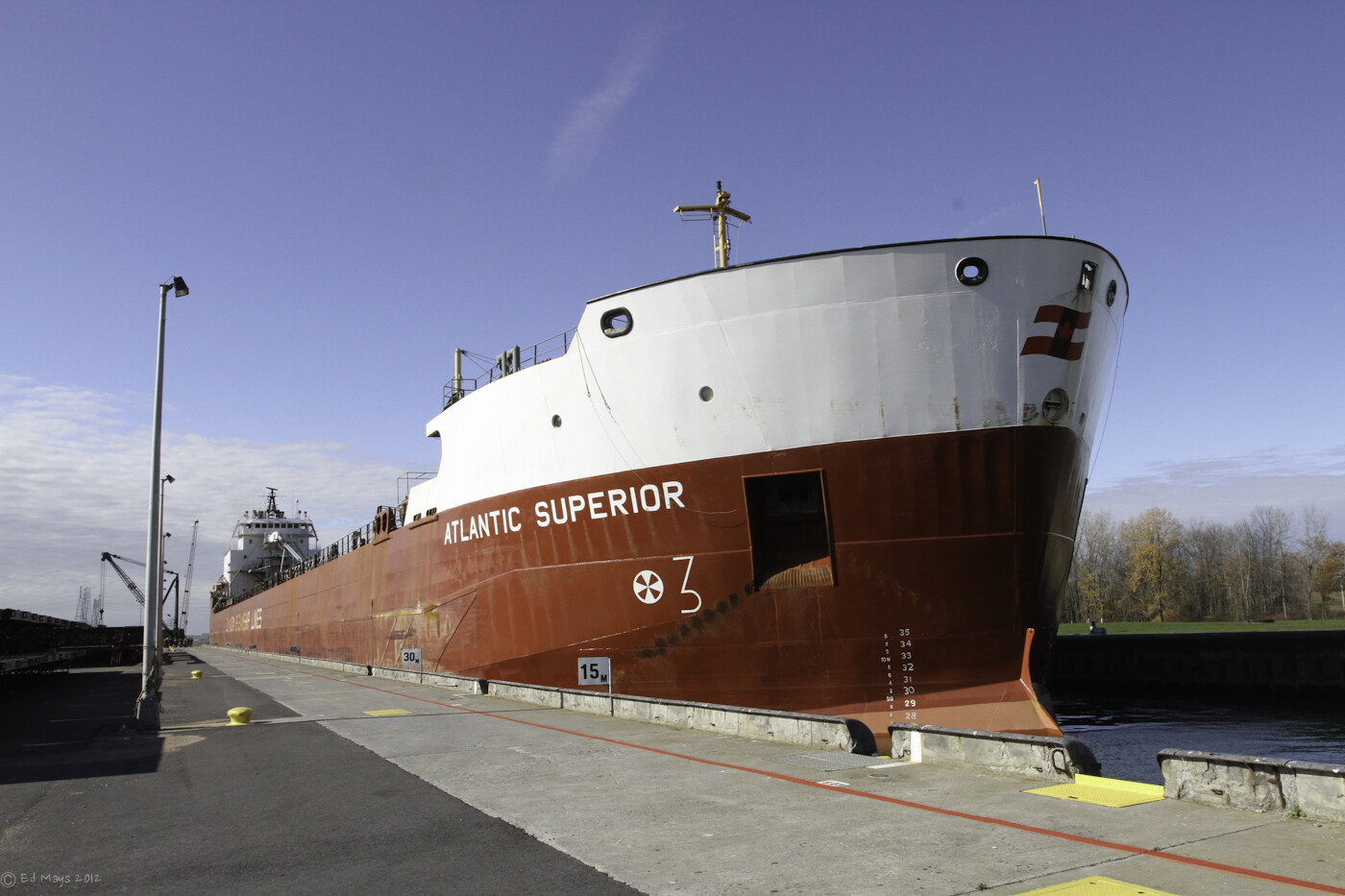Interview with
Mr. Bruce Hodgson
Director, Market Development

First, can you tell us about the history of this vital waterway? When was it developed commercially, and can you elaborate on why it is a good solution for shipping?
We are currently celebrating the sixtieth Anniversary of the St. Lawrence Seaway (SLS). The joint Canadian/U.S. St. Lawrence Seaway project was completed in 1959, and it links the Great Lakes region to global markets.
The Montreal / Lake Ontario Section, an engineering marvel, was completed on time and on budget and opened to deep-draft navigation in 1959. Since 1959, more than 2.5 billion tons of cargo have moved to and from Canada, the U.S. and nearly fifty other nations in this way. Almost twenty-five percent of Seaway traffic travels to and from overseas ports, especially in Europe, the Middle East and Africa.
There is availability of a specialized laker fleet for maximum efficiency, many equipped with self-unloading devices for unloading at shore facilities ship-to-land or transhipping bulk cargo ship-to-ship).
In addition to its strategic geographical location, the Seaway has maintained a near-perfect record of trouble-free navigation through ongoing improvements and meticulous maintenance.
What size and type of ships typically use the SLS and what are the main ports and regions of North America that can be reached?
Handy size and smaller, multi-purpose, tankers and domestic bulkers typically use the SLS and the SLSMC, along with our U.S. counterparts, sponsor a marketing alliance of transportation stakeholders that actively promote marine transportation on the Great Lakes/Seaway System. It is called HwyH2O.
HwyH2O is a 3,700-kilometre (2,400 miles) marine corridor between Canada and the United States. Comprised of the St. Lawrence River, St. Lawrence Seaway and the Great Lakes, HwyH2O is a vital transportation artery that enables domestic and international trade, and offers unique access directly into North America’s commercial, industrial and agricultural heartland. Members include commercial entities such as ports and transportation associated enterprises, like stevedores, carriers and municipalities. The provinces and states that surround the system would be the third-largest economy in the world if they were one country.
What is the biggest advantage compared to using an East Coast port and then using truck or rail to transport the cargo inland?
Marine transportation saves on costs, time and is better for the environment. Shifting cargo from land to water lowers congestion on our highways and railways, raises our overall fuel efficiency and lowers total greenhouse gas emissions. Marine cargo up to 30,000 tonnes is equal to 301 rail cars or 964 trucks.
Marine transportation is the most energy-efficient transportation mode, with the lowest carbon footprint, moving cargo using the Great Lakes or the Seaway. The system is an excellent way of supporting sustainable growth while easing congestion on land.
For oversize and over-dimension cargo, the longer you stay on the water the better for your delivery, as you reduce permitting and logistics costs.

What do you actively do to entice shipowners to use the SLS?
We offer direct access to the industrial hub of North America, getting them closer to their destination and saving time and money. We also provide intermodal facilities and modernized infrastructure connecting the port to major North American markets, aiding ease and efficiency.
We are very proud of the Hands-Free Mooring (HFM) that reinforces efficiency and safety. With the elimination of tie-up line for most vessels, Seaway employees and vessel crews’ safety are improved, and ships experience less wear and tear as they enter and exit the locks. Vessels calling our system now no longer require Seaway fittings. The vessel owners save time as a result of Hands-Free Mooring (HFM). This revolutionary technology won international praise for being a true world leader in marine technology and received the Promising Innovation in Transport Award from the Organization for Economic Cooperation and Development (OECD).

We also offer competitive rates with incentive programs, such as:
– The Gateway Incentive Program, which offers to shippers a percentage reduction negotiated and offered on applicable cargo tolls for shipments of a specific commodity diverted to the Seaway from a competing gateway.
– Our Service Incentive Program offers a rebate of twenty percent on applicable cargo tolls for carriers that implement a new service. You can save up to forty percent in conjunction with a new business incentive program.
– The New Business Incentive Program – offers a twenty percent discount on cargo tolls over the course of three years for commodity/origin/destination combinations approved as ‘new business’.
– Finally, the Volume Rebate Incentive Program – offers a percent reduction on cargo tolls applicable to incremental volumes meeting a set of criteria. The application form can be found on our website under Toll Incentives. Feel free to have a look at them here.
Who are the main shipowners that use the SLS regularly?
The primary types of ships on the Seaway fall into these three main groups. First, ‘Lakers’ which are built specifically for use within the Great Lakes/Seaway System and rarely exit the waterway. ‘Salties’ are ocean-going ships that enable trade with nations overseas and ‘Tug Propelled Barges’ consist of a tug fitted into a specially designed barge. All these ships move a wide variety of cargo.
We have domestic owners and international owners that bring their vessels to the Seaway.
What about the co-operation between the two neighbours running his canal, taking into consideration the heightened security regarding shipping etc?
The St. Lawrence Seaway was built as a binational partnership between Canada and the U.S. through international agreements that carry the weight of treaties, and continues to operate as such. Administration of the waterway is shared by the St. Lawrence Seaway Development Corporation in the U.S. and the St. Lawrence Seaway Management Corporation in Canada. The two Seaway Corporations have an excellent working relationship and continue to work together daily in administering seaway operations. It’s a joint effort; we use the same regulations to support the vital trade gateway connecting the heart of North America to over fifty nations, while also working together to improve safety, security and efficiency on the St. Lawrence Seaway from its entry point to exit point.
When a vessel transits the Seaway, it can move between Canada and the U.S. up to twenty-seven times for one voyage. The process is transparent with one set of regulations.

Do you have a limitation as to the size of ships that you can accommodate?
Yes, we do. The vessel maximum is 225.5 m (740 ft) length; 23.77 m (78ft) beam; 8.08 m (26 ft, 6in) draft; 35.5 m (116.5 ft.) height above water.
Let’s assume that a customer in Asia must deliver some heavy equipment into the port of Duluth. Would you, in this case, be able to answer questions about the feasibility of using the SLS as the gateway, or would such a request be given to the shipowner? Is weather an obstacle from time to time, given the fact that it can be cold in the northern U.S. and Canada?
We at the Seaway play the role of catalyst for the shippers, agents, and carriers throughout the world. As such, once contacted, our team will evaluate the opportunity and leverage the HwyH2O network to support the movement of the cargo. Regarding your example, we would work with the Port of Duluth and potential partners to ensure that the shipper has the information they require to successfully move the cargo. Logistics and Transportation is a team sport, and as such, many of our carriers and stakeholders would provide the local expertise to manage and support through the challenges associated with inclement weather.
What are the plans for the SLS?
The plan is to leverage Hands-Free Mooring to increase the number of foreign vessels that call on the lakes. Of course, also to continue to improve our services for our existing carrier network.
What’s the best way to get in touch with you?
The point of contact is:
Ken Carey
Manager, Business Development
p: 905-641-1932 x5067
c: 289-214-8163
kcarey@seaway.ca
http://seaway.ca/







